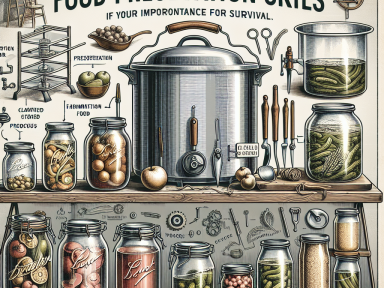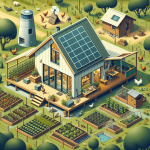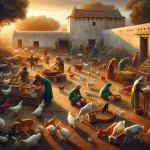Why Preserving Your Own Food is Essential for Survival
In the unpredictable world we live, the ability to preserve your own food could mean the difference between life and death. Our ancestors understood this, utilizing techniques such as canning and fermentation to ensure they had food year-round. Today, these skills are equally as vital, not just for self-reliance, but for survival in trying times.
The Importance of Food Preservation
As tensions rise globally and disastrous weather events become increasingly common, our food supply chain is more vulnerable than ever. Could you survive if supermarkets suddenly became empty? Learning to preserve food is an essential part of any survival plan. More than convenience, it is a matter of life and death.
Mastering Canning for Long-term Food Storage
Canning is one of the most reliable methods of food preservation. Correctly canned food can last for years, yet many people are intimidated by the process. Don’t be. With the right equipment and knowledge, anyone can start to can their own harvest.
Essential Tools for Canning
- Pressure Cooker
- Glass Jars with Lids and Rings
- Canning Rack
- Jar Lifter
Steps to Safe Canning
- Clean your jars, lids, and rings.
- Fill jars with high-acid food (fruits, pickles, jams).
- Secure lids and place jars in a pressure cooker or water bath canner.
- Process the jars according to the recipe instructions.
- Remove jars from cooker or canner and allow to cool.
- Check the seals. If the jar lid doesn’t pop when pressed, it’s sealed.
Unlocking the Power of Fermentation
Fermentation not only preserves food but also enhances taste and nutrition. Embraced by cultures for millennia, fermenting can transform ordinary ingredients into flavor-packed, probiotic powerhouses.
Fermentation Basics
- Start with fresh, clean produce.
- Add brine (water and salt).
- Keep everything submerged below the brine to prevent mold.
- Wait for friendly bacteria to do their work.
The Fermentation Process
- Prepare your produce. Chop, shred, or leave whole, depending on the recipe.
- Pack them into a clean jar.
- Fill the jar with brine.
- Keep the produce submerged below the brine.
- Wait for the magic to happen.
- After fermentation, store in the fridge to prolong shelf life.
Conclusion
It’s not a matter of if disaster will strike, but when. Canning and fermenting are more than just quaint hobbies—they’re survival skills. Invest time now to master these techniques and no matter what the future holds, you’ll be prepared. Remember, it’s always better to be ready a year early than a day late.




GIPHY App Key not set. Please check settings